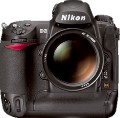Well, I have a great way to start the New Year – got the loan of a brand new Fuji XE-1 for review! I’ll be writing an article of course. First impression out of the box: very light, classic layout for controls. Took a few test shots and now I’m reading through the manual….. I will be working with the camera for a week or two, and I will publish some images and brief comments here. I’m particularly interested in the performance of the new CMOS sensor. I will also be writing a review article for publication.
sensor
Optimizing Image Sharpness, Aperture, and Diffraction Limitation
Optimizing Image Sharpness, Aperture, and Diffraction Limitation
Some years ago, I rented a 14mm wide angle lens for my Nikon F5 (THAT’S how long it was) and went off to try out some ideas I had for landscape photography.
Mounted the lens on the camera, set up the tripod, put the camera on Aperture priority and f/22. “Now I’m ready”, I thought, “if I can get good depth of field at f/11, f/22 should be great!”. Right?
Nope!
All the images I took that day were unsharp, victims of diffraction limit caused by a too-small aperture. In fact, this kind of flaw is a matter of physics, and is quite predictable – it is a combination of lens aperture, and the resolving power of the sensor or film in use.
Simply put, each lens has a “sweet spot” for maximum depth of field. For a 35mm camera with a full-frame sensor, this probably starts somewhere around f/5.6, and begins to fall off f/8 to f/11. This can vary, depending on sensor/film size, lens used, etc. Once the diffraction limit is passed, the image becomes increasingly unsharp. Going back to my experience: f/22 won’t cut it.
Sean McHugh, who runs the site cambridgeincolor.com, developed an online calculator that can help you determine where the diffraction limit will be for most cameras. Here’s a link to that page (scroll down a bit):
http://www.cambridgeincolour.com/tutorials/diffraction-photography-2.htm
Here’s a few examples from the calculator. They show format size, sensor size, and range of onset by aperture. The lower aperture numbers generally show where one might begin to see softening of smaller details. Keep in mind that there’s almost always a difference in appearance between viewing on-screen at 100%, and viewing a print – most notably print size and viewing distance:
6.45 format, 22MP, f/16.3 – f/24.5
35mm FF 12MP, f/12.7- f/19.1
35mm 1.5 CF, 16MP, f /7.3 – f /10.9
4/3 sensor 16MP, f/5.9 – f/8.8
I use a Hasselblad H-series camera, with a 22MP Phase One back. I start to see noticeable diffraction limitation at around f/20-f/22, which seems to fit the data provided by Sean.
I suggest you have a look at the calculator, and then test your own lenses, and find the sweet spot for each one. Good shooting!
Nikon Pro Guide to the D3 Camera
I’ve been searching around for a clear, concise document that explains some of the more sophisticated (perhaps I should say “complex”) features of the D3 and its cousins. I came across a very good document published by Nikon, that among other things, provides useage guidelines for the autofocus options on the camera. Here is a link to the PDF: http://tinyurl.com/kmt5av

link to my web site: http://www.davidsaffir.com



